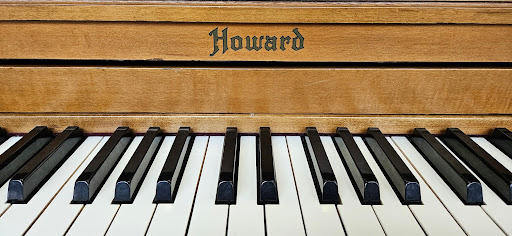
Alden Bruner
You’re walking through the halls of Austin High. The time is 12:18 PM. You look up as you hear a faint melody chiming about the building. Wondering its source, you run to the balcony overlooking the cafeteria. Aha. A young pupil, tickling the ivories. Our cafeteria piano, though small, is mighty in this campus’ heart. It’s a hotspot for pros and schmoes alike, providing a chance for students to express themselves inside school walls.
A few years ago, Austin High installed a brand new member of our family: A bona fide public piano. It’s just like the ones inside the Frost Tower Juiceland location downtown, and outside the Windsor Public Library. Since then, kids from all different walks of life have stepped up to the plate and whacked away on those keys. In those attempts, they’ve lit a spark in the student body. “I feel like music is a part of life,” said one listener. “of being human.” No matter how cynical you are, you cannot deny the power music has to create community. That’s what the piano does for us. It brings a piece of warmth to this building. Without it, school would be even more bleak. This Howard piano shoots out tunes all day long, making sure there’s no one in the school who hasn’t heard it.
In the city of live music, it’s no surprise that we’d have a stage of our own, plus artists to play it. Just like the pianos over at Frost Tower Juiceland and the Windsor Public Library, Austin High uses this public piano idea to cultivate culture on campus. If students don’t have an opportunity to play piano anywhere else, they can surely practice here. The free opportunity the piano provides extends art and music to anyone. No matter who you are, you can let that music in your heart out.
Due to the wide audience it receives, there is a large range of opinions to go along with it. Some students might complain about it being an annoyance, some might say it provides a wonderful ambiance, while others might not even notice at all. One student, Alejandro Ortega, even suggests that “we could just bring some people from jazz band and start jamming out”. For better or for worse, though, we have to agree that the Howard piano has become a part of our school.
Have you ever thought about the piano in the cafeteria? You’ve certainly heard it at some point, low and high notes, fast and slow songs, and the way it mixes and reverberates in the halls. Many elementary and middle school cafeterias have pianos, and lots of public spaces do as well. It’s easy to see why. They provide a tool for people to express their musical capabilities and are able to help connect communities through a shared love of music.
